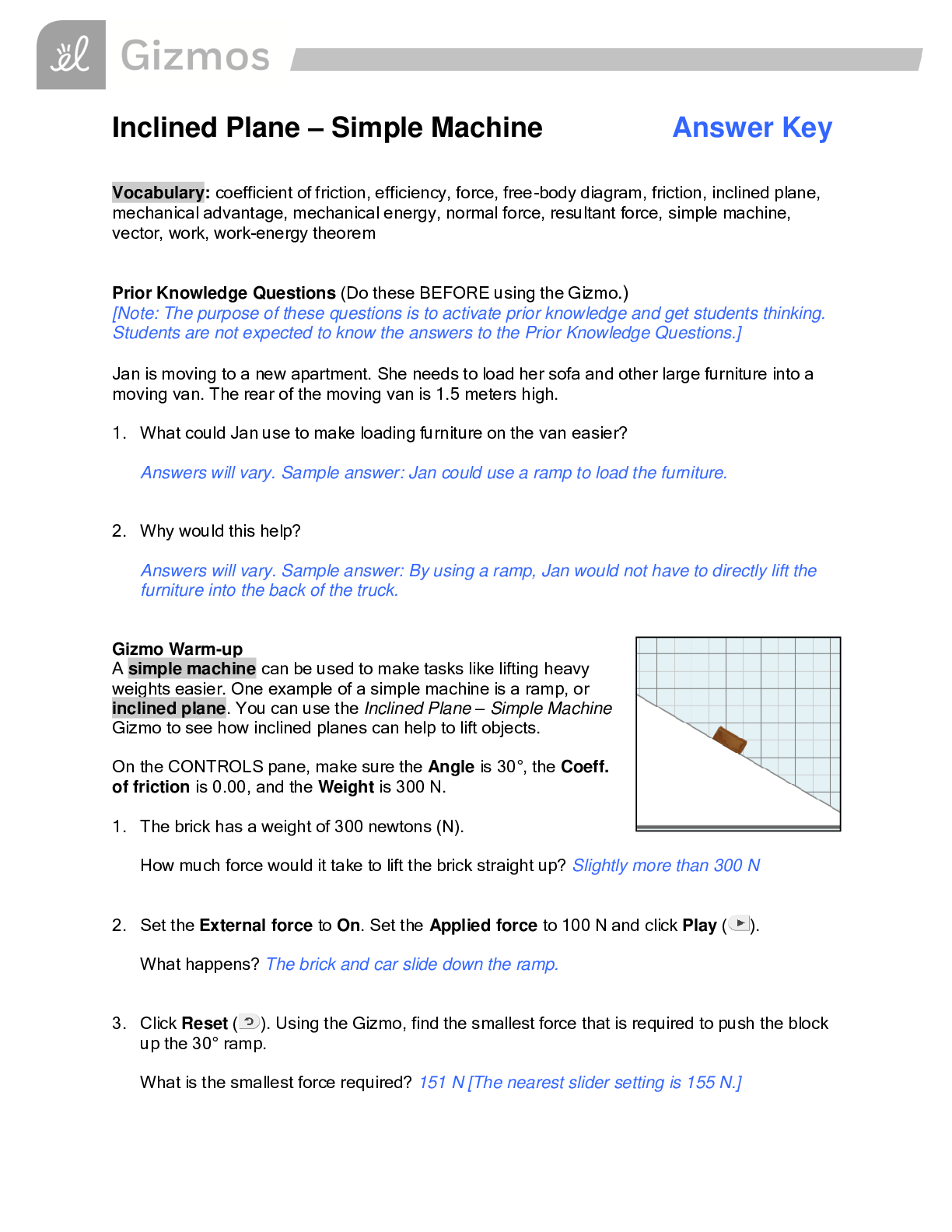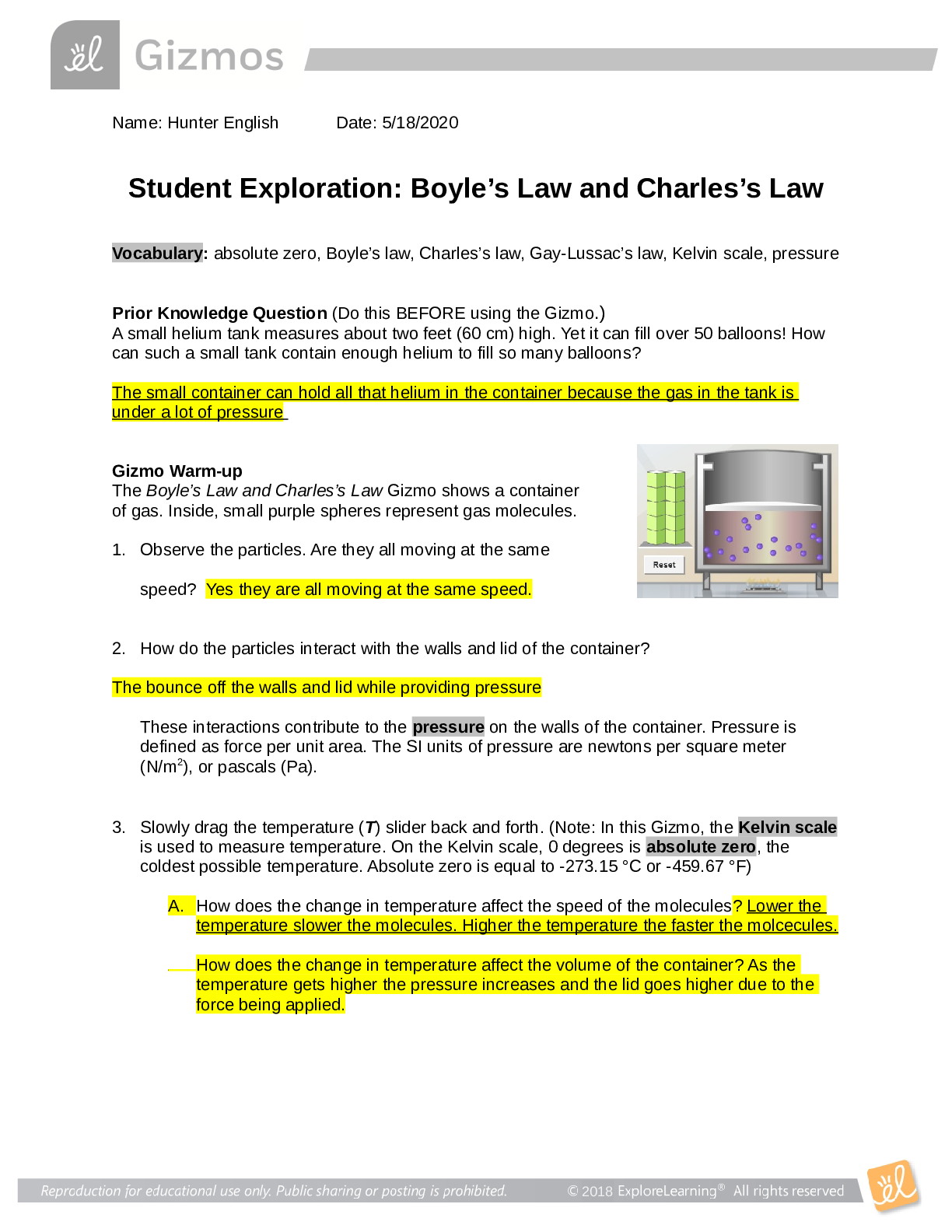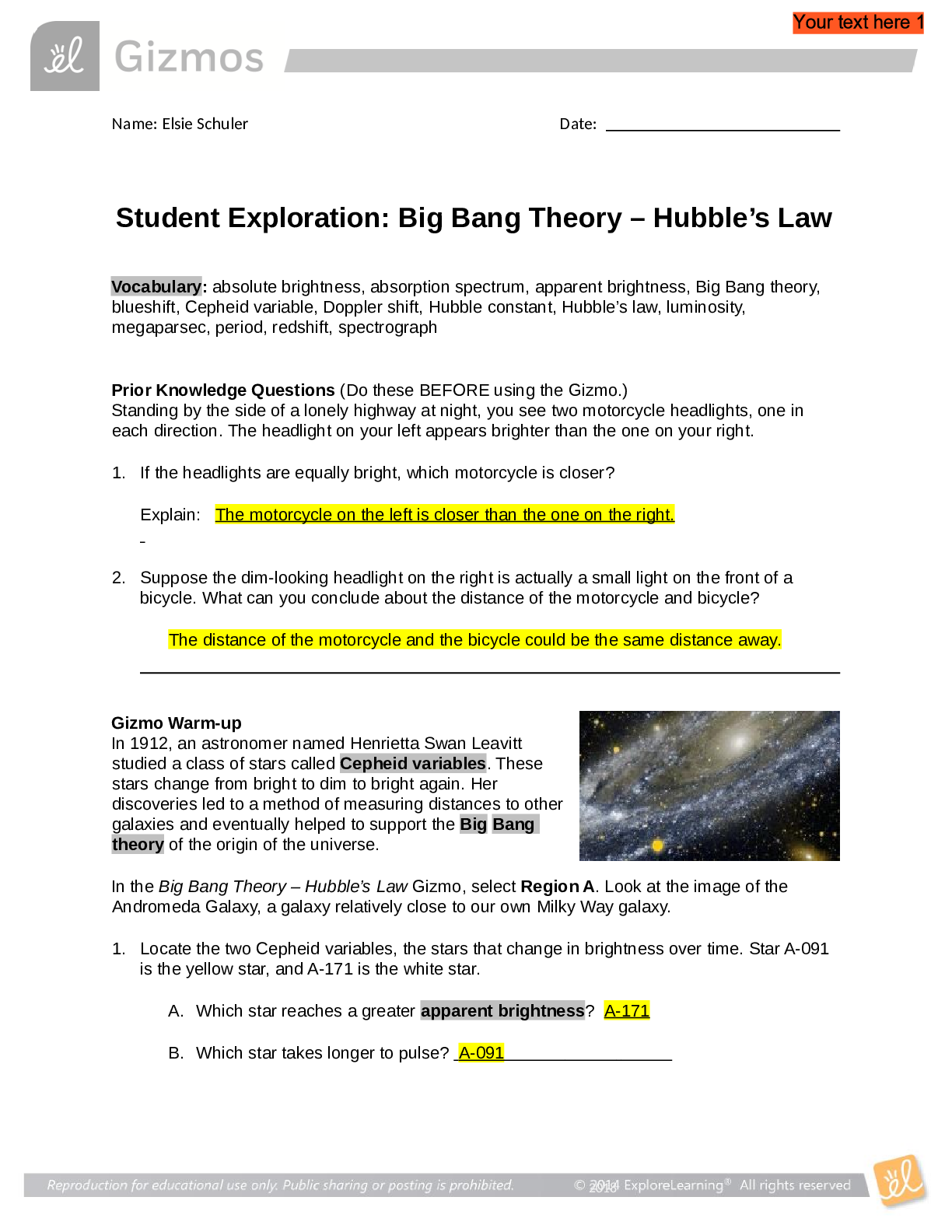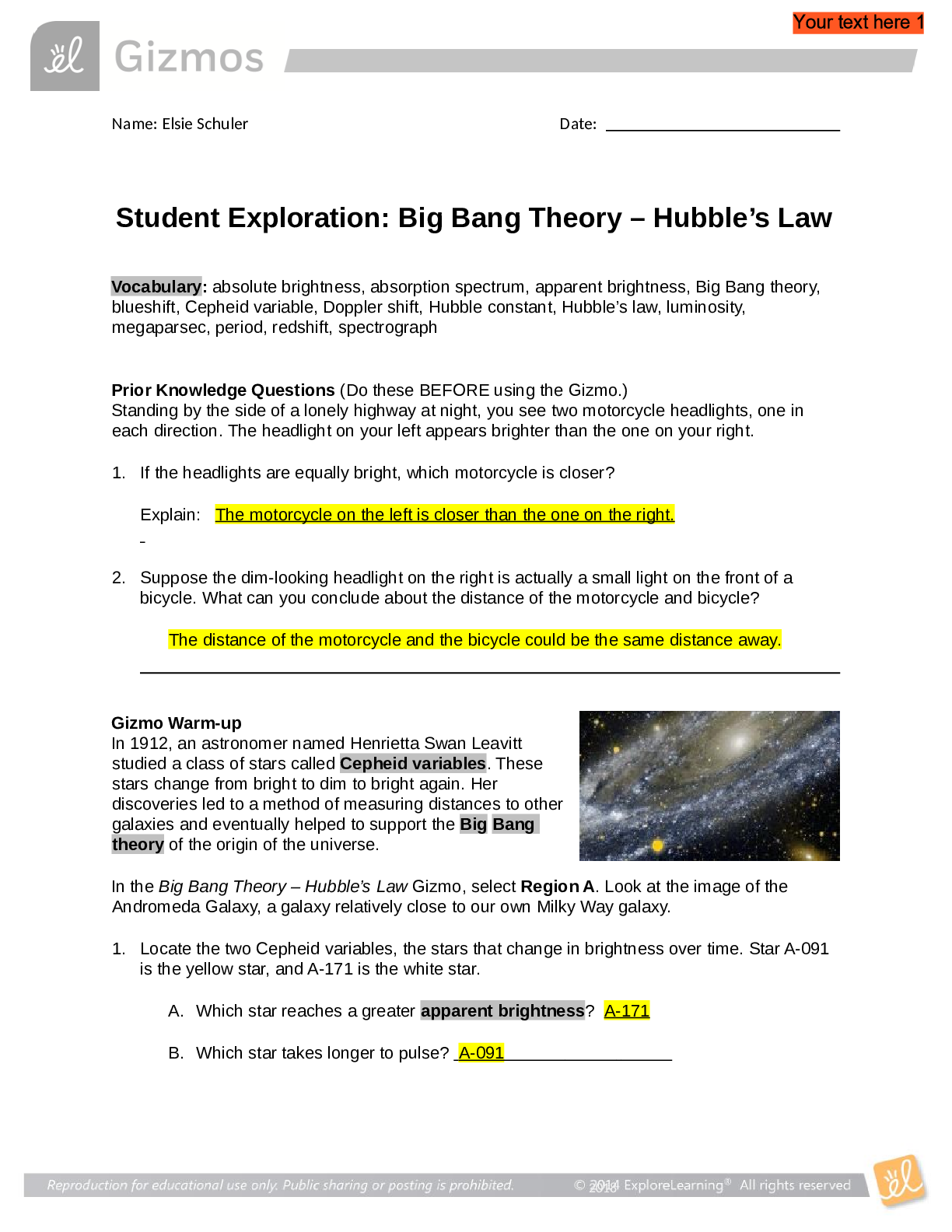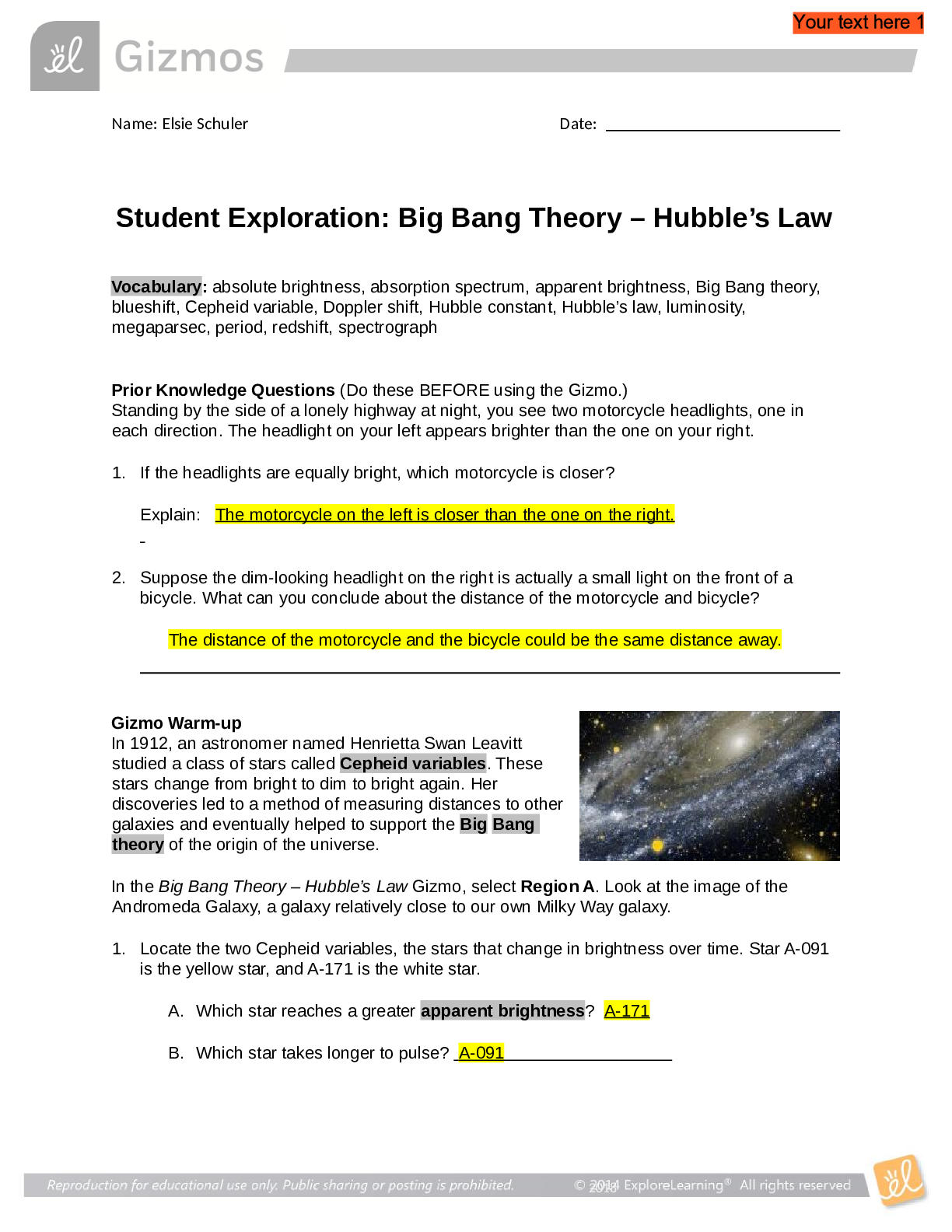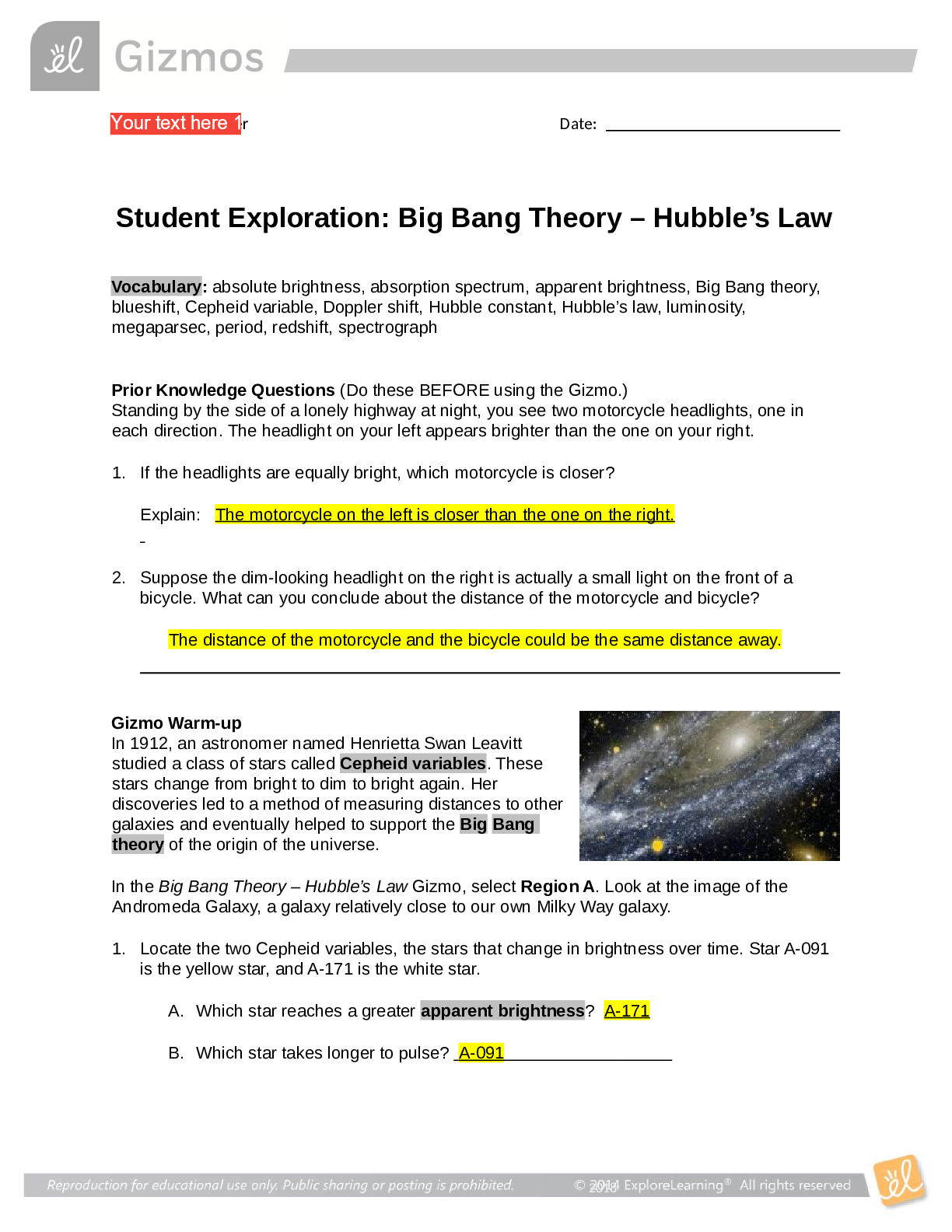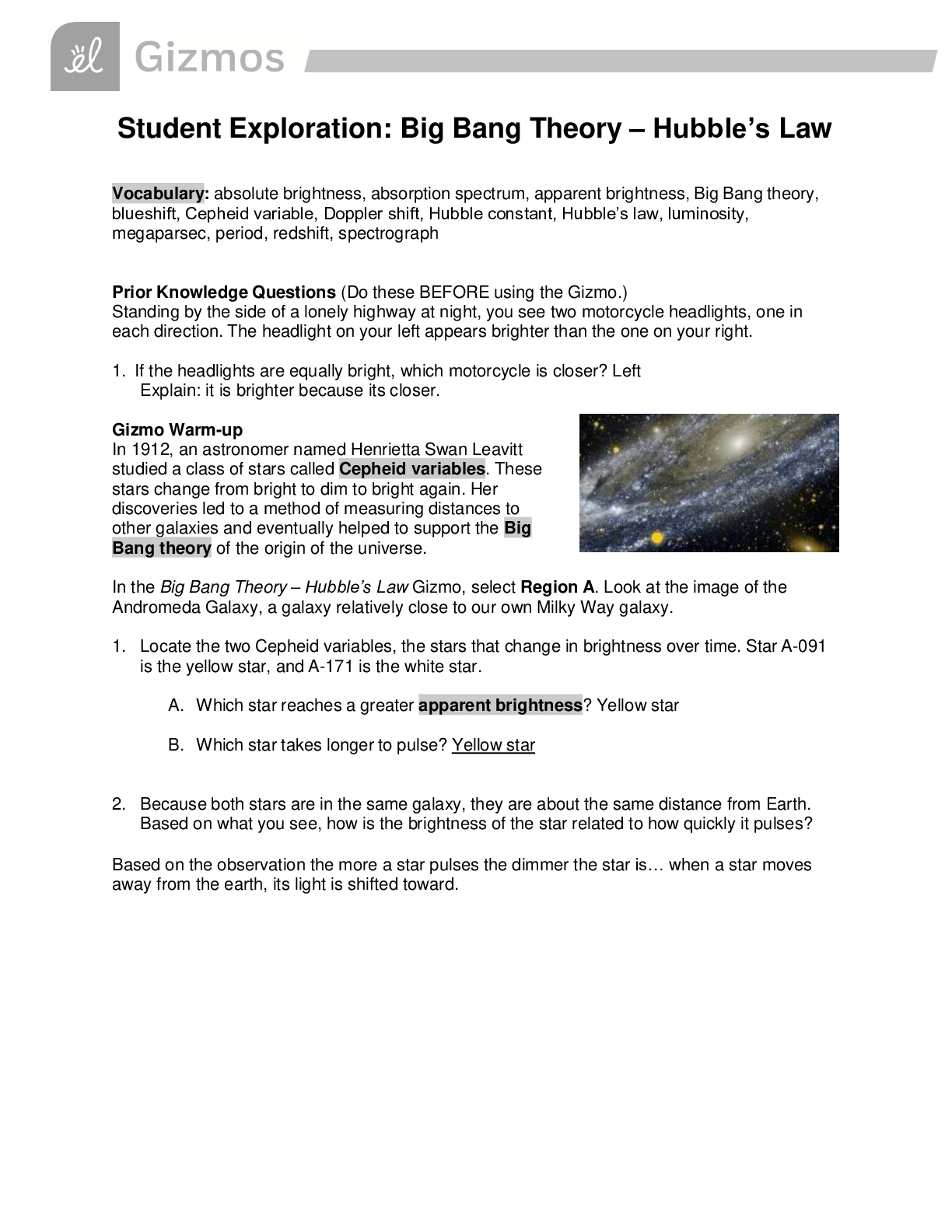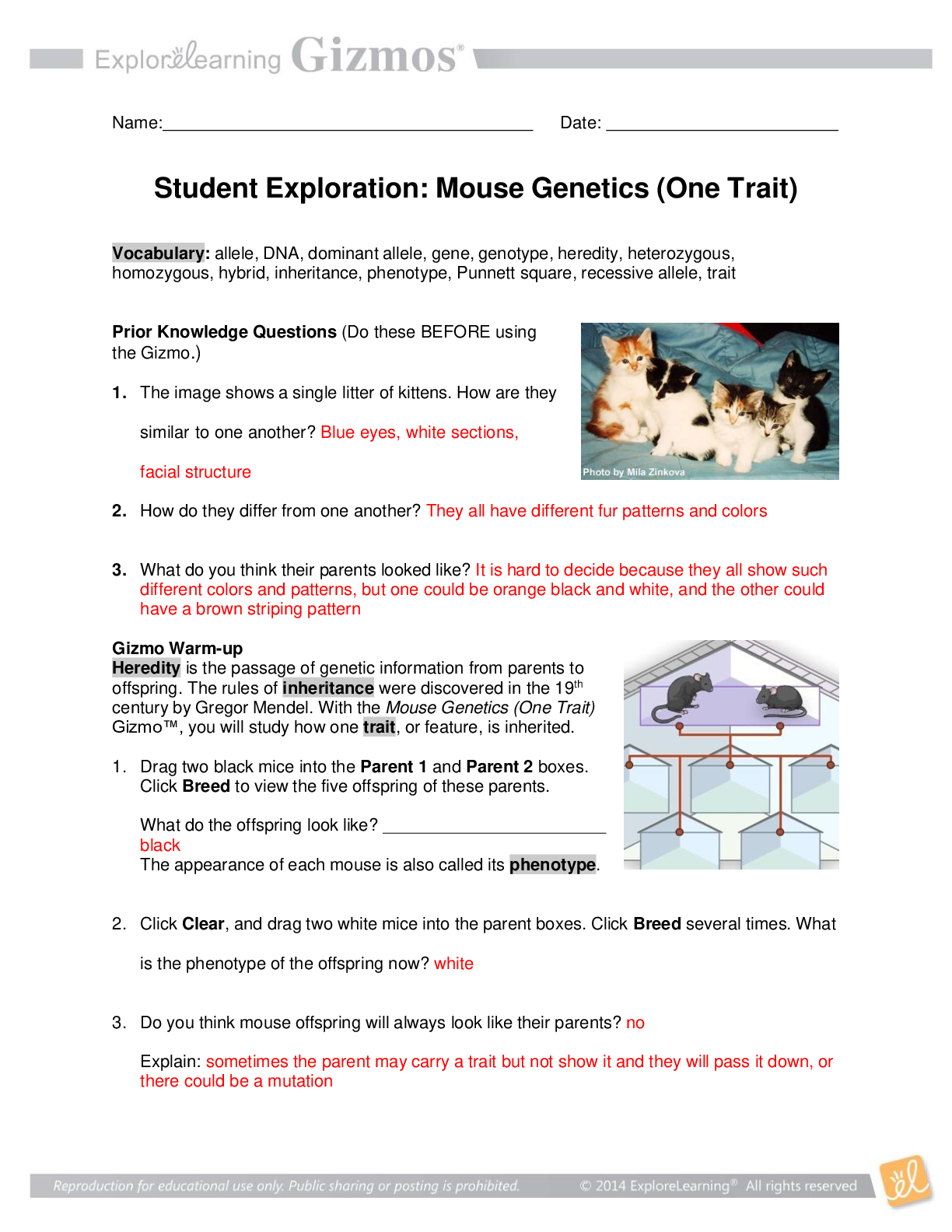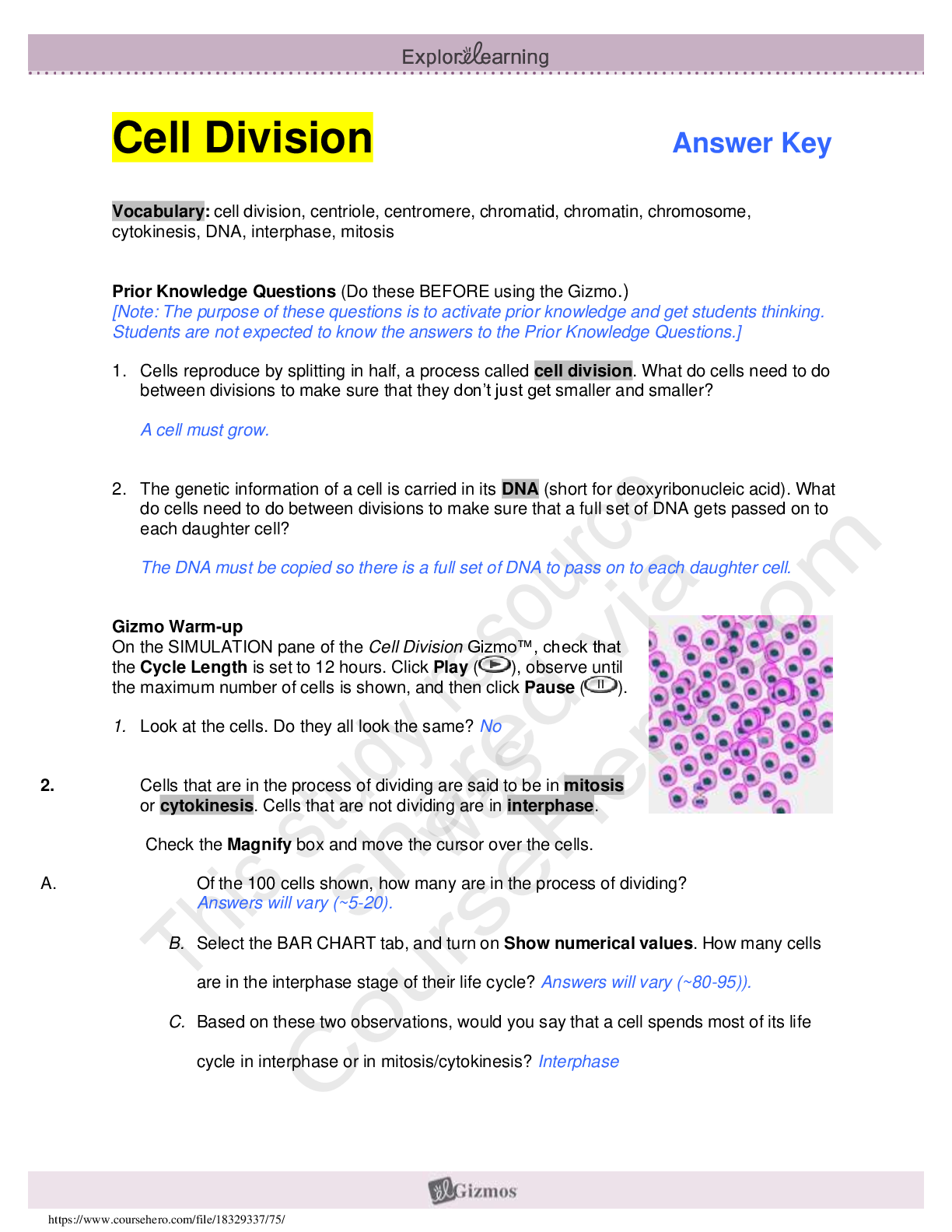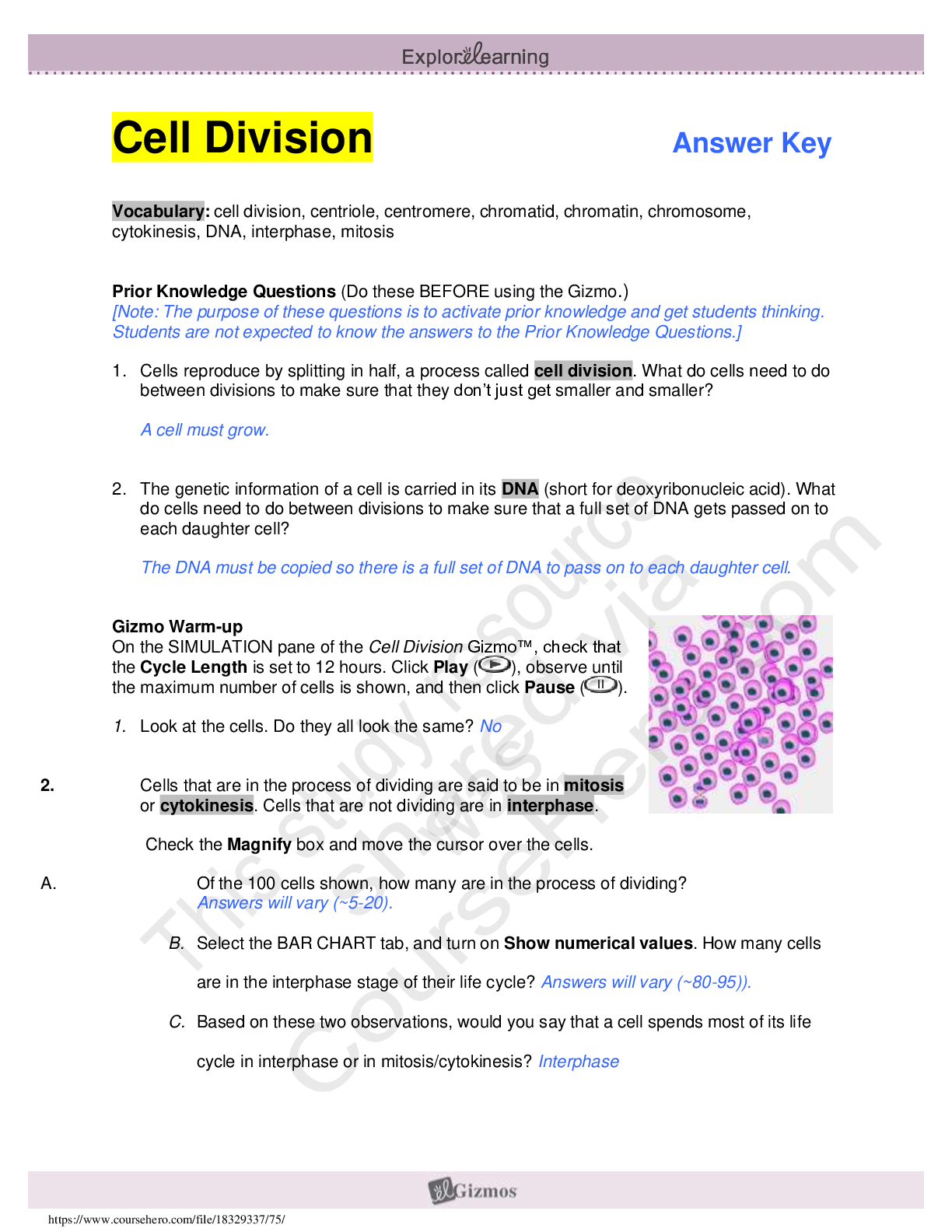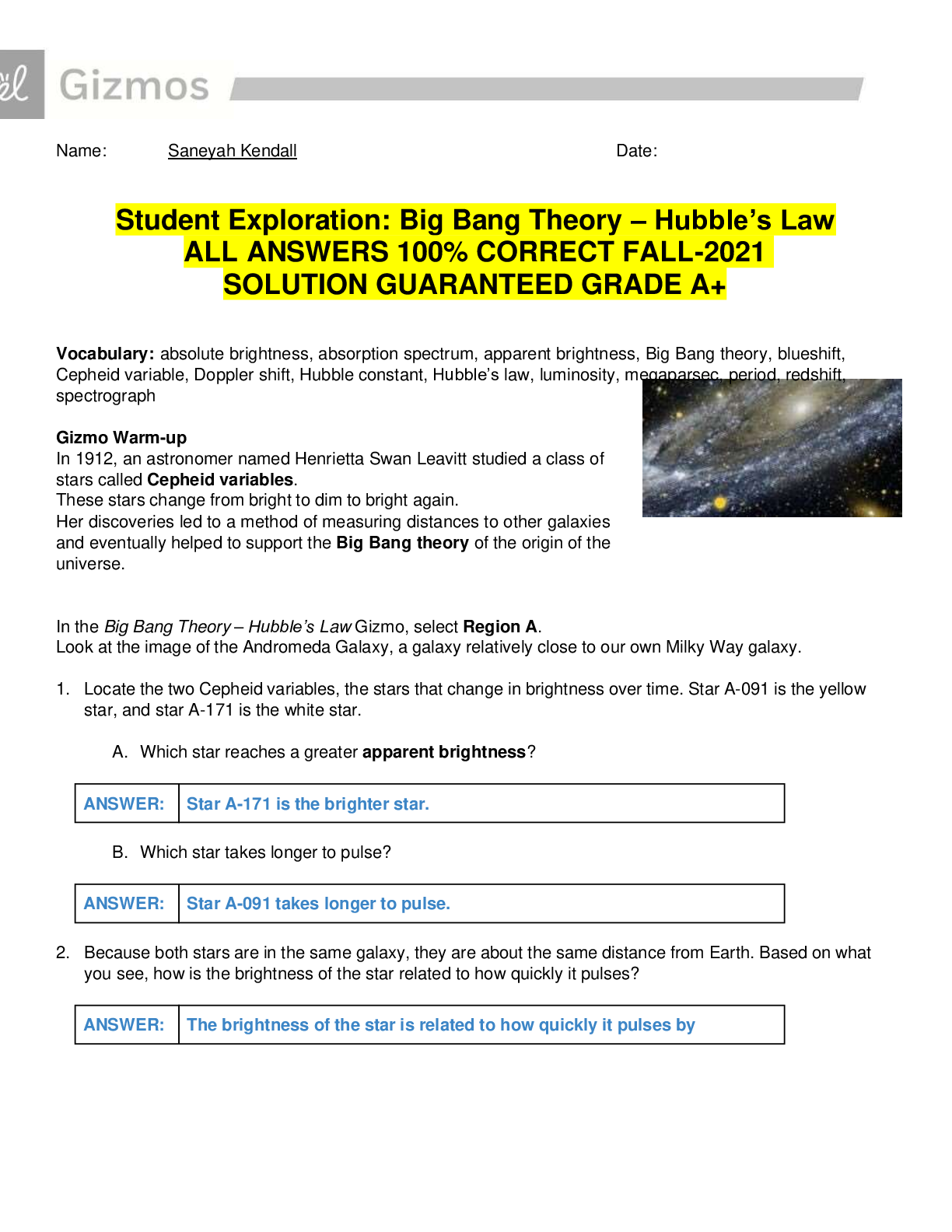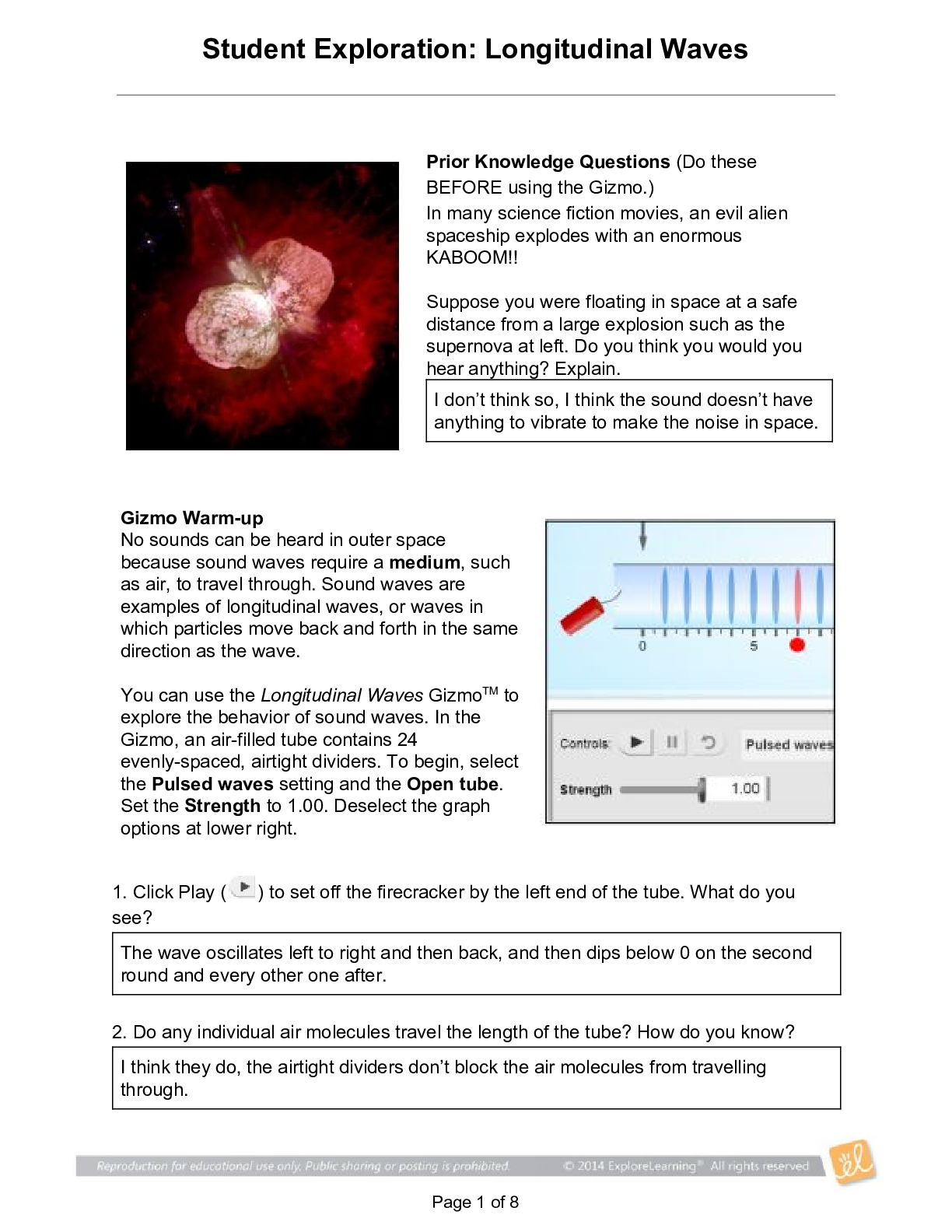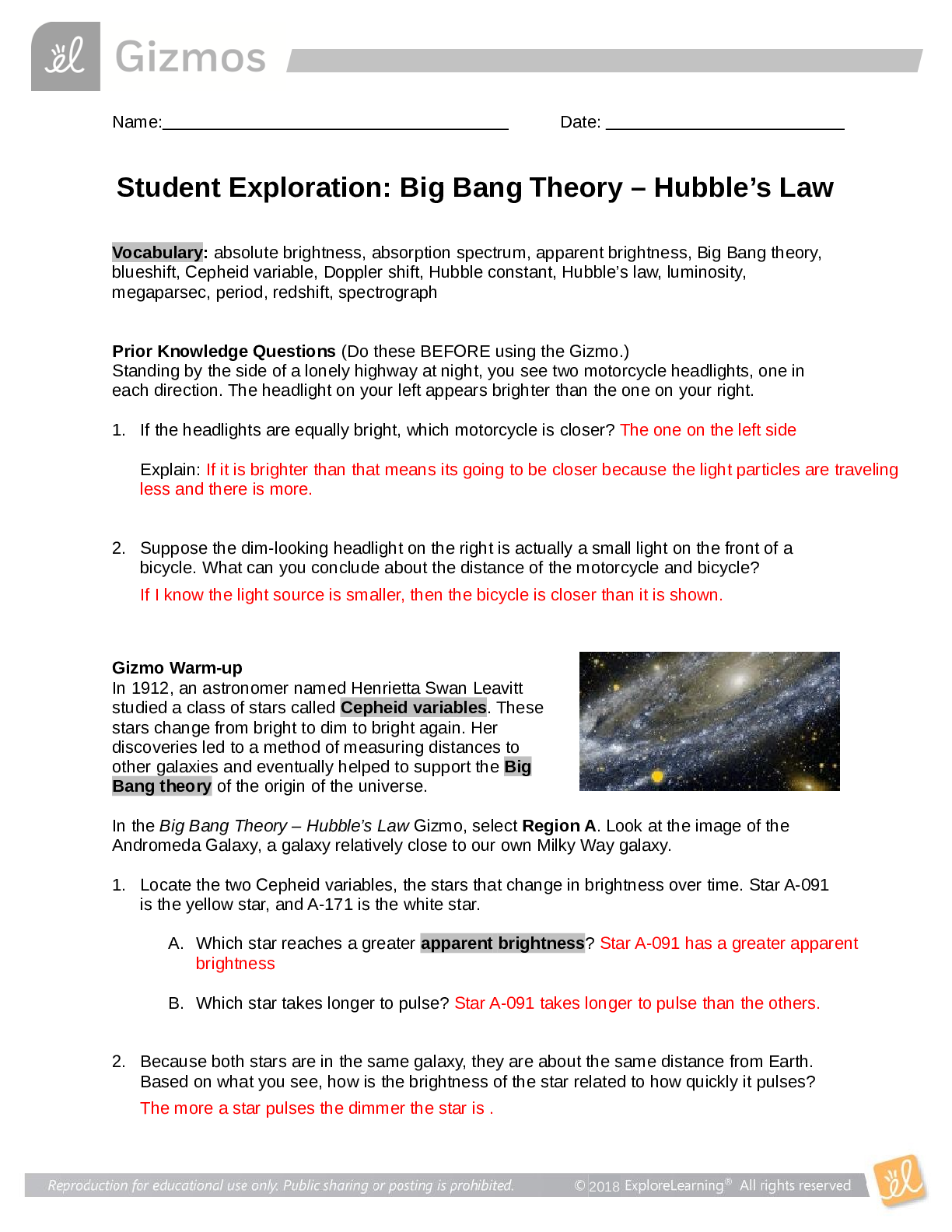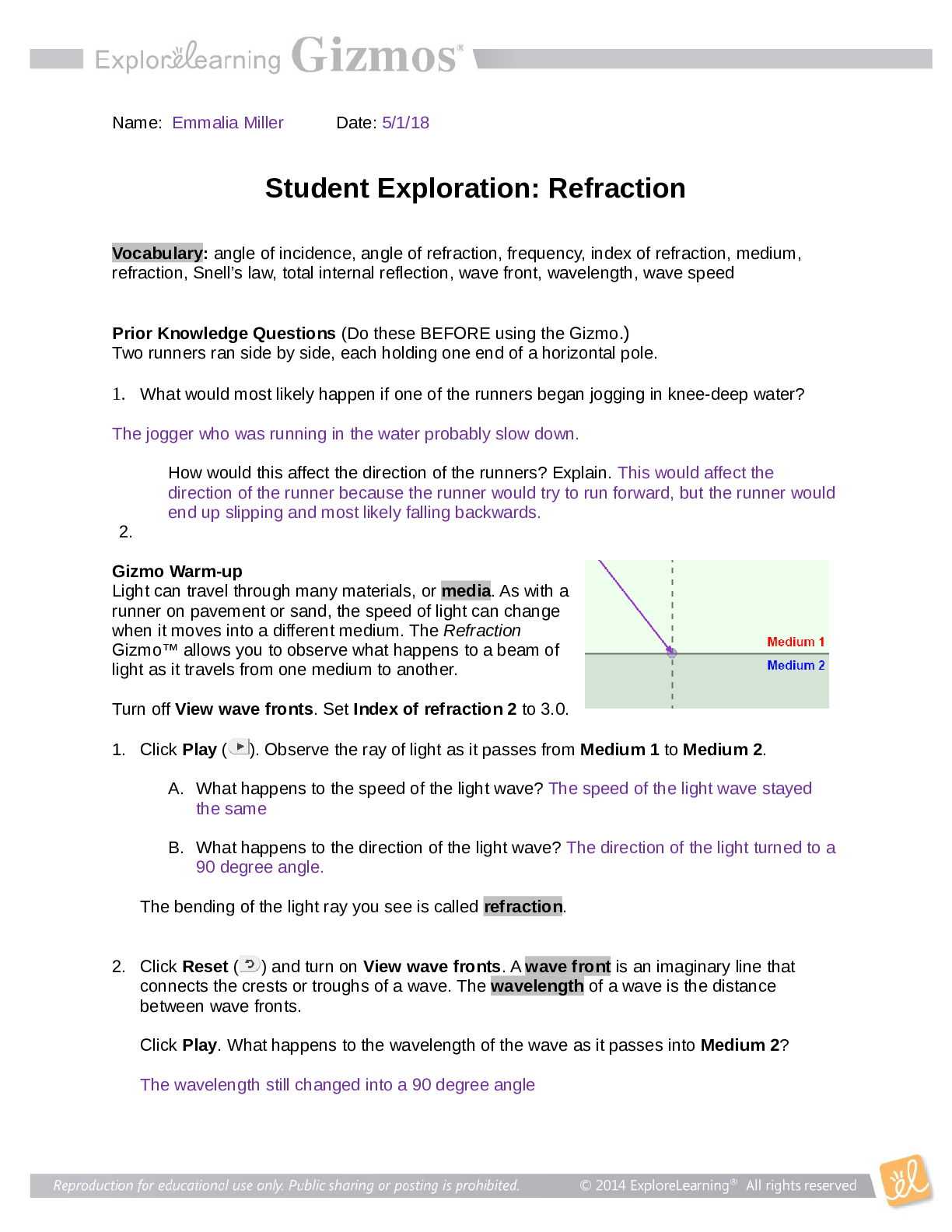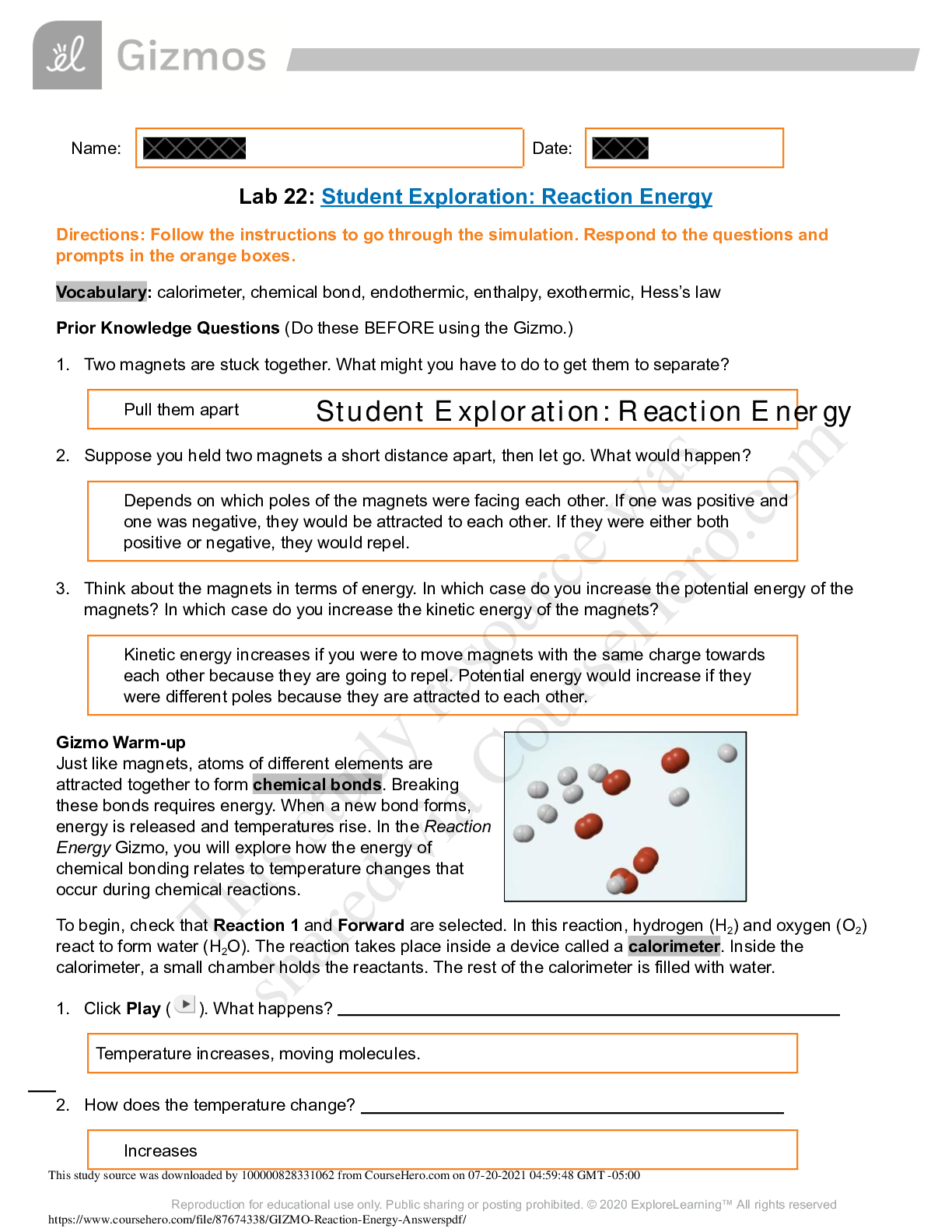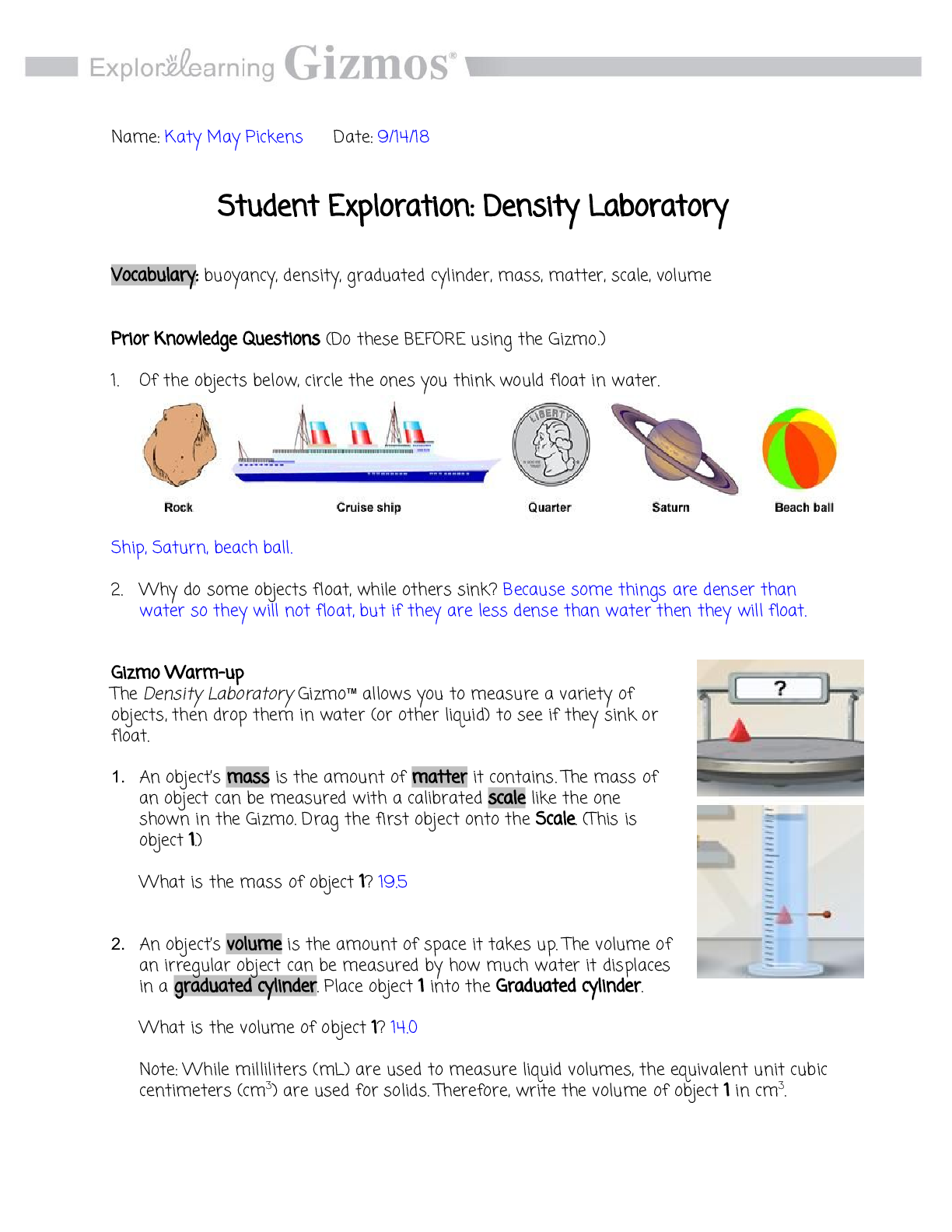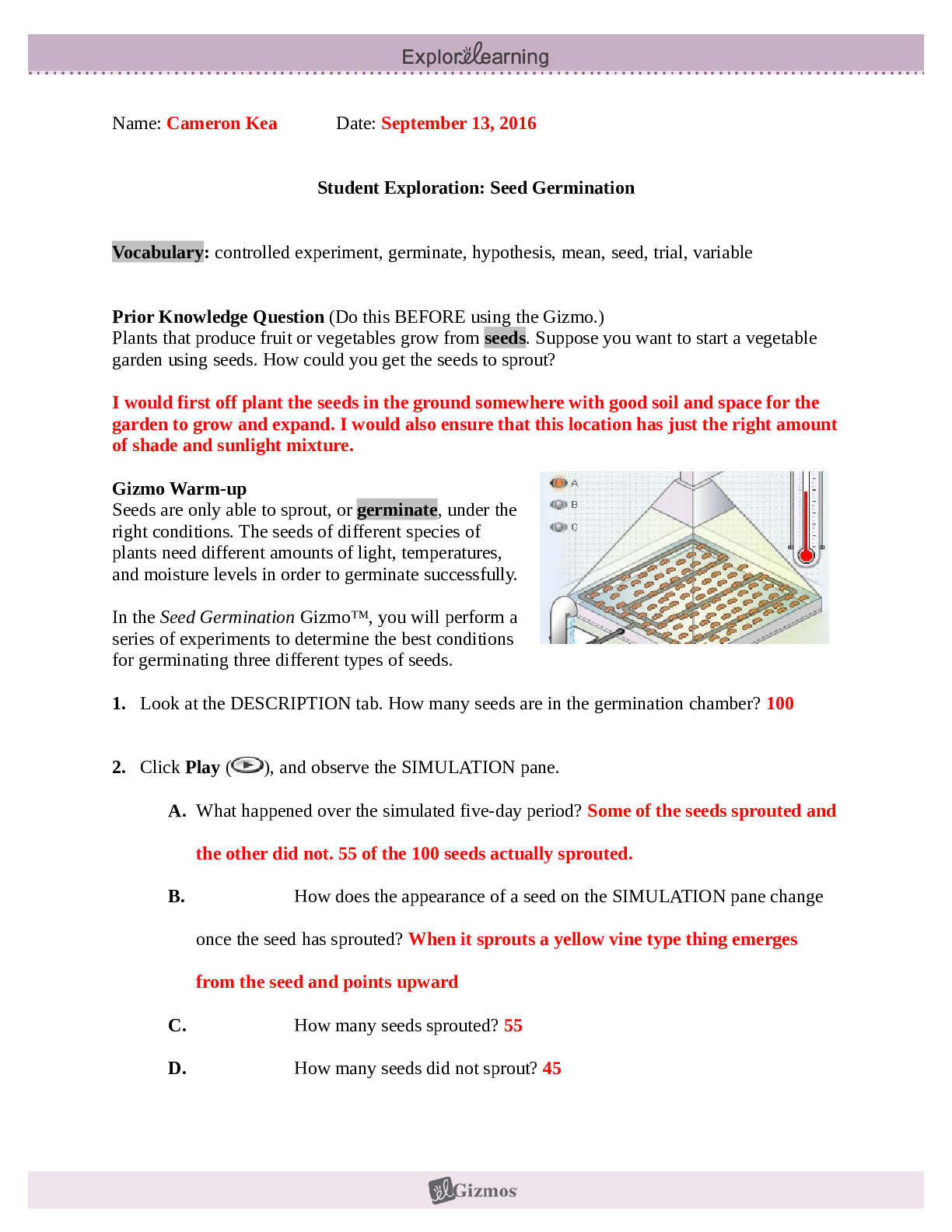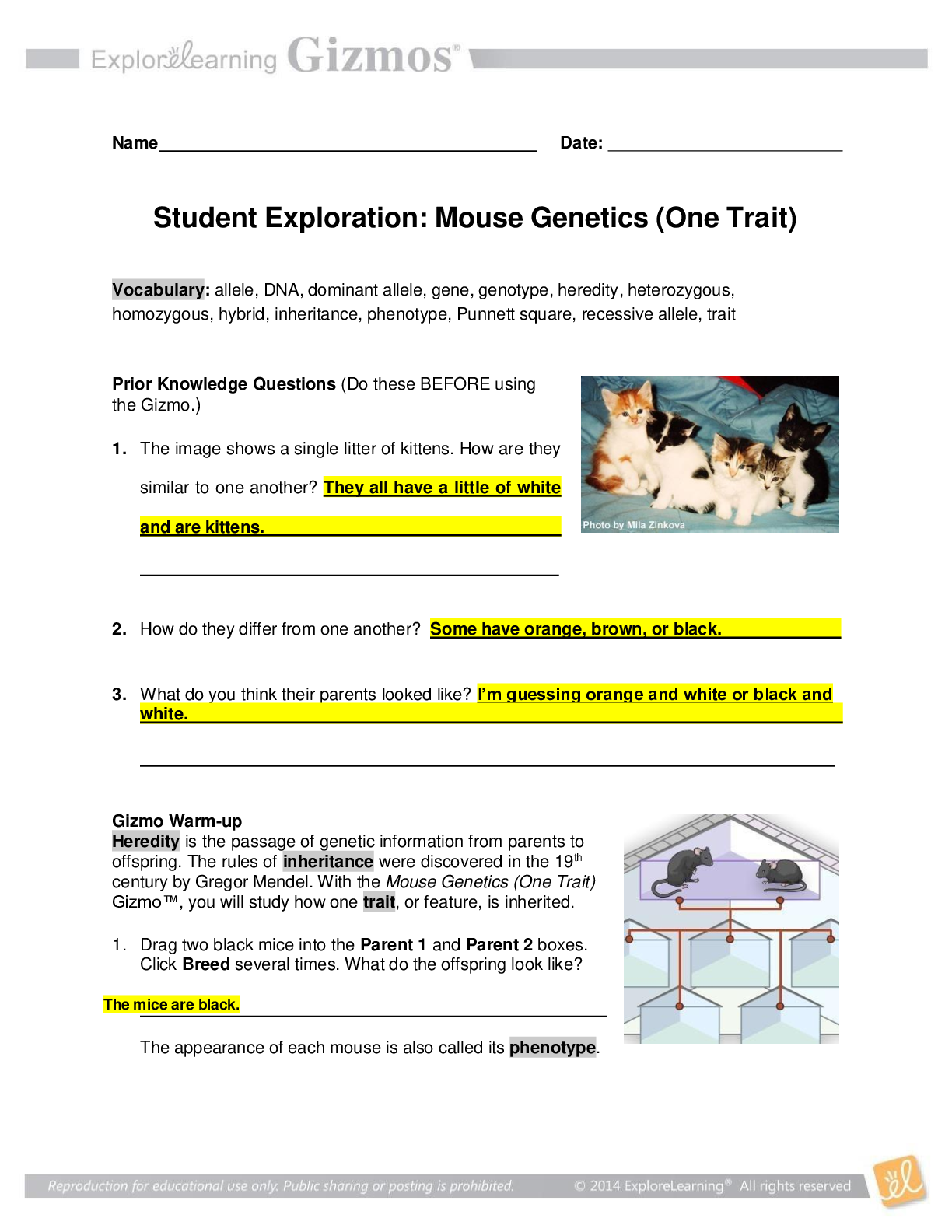Physics > GIZMOS > Student Exploration: GIZMO LEARNING: Waves Answer Key Vocabulary: amplitude, compression, crest, fre (All)
Student Exploration: GIZMO LEARNING: Waves Answer Key Vocabulary: amplitude, compression, crest, frequency, linear mass density, longitudinal wave, medium, period, power, rarefaction, transverse wave, trough, wave, wavelength, wave speed Prior Knowledge Questions (Do these BEFORE using the Gizmo.) 100% Score
Document Content and Description Below
Waves Answer Key Vocabulary: amplitude, compression, crest, frequency, linear mass density, longitudinal wave, medium, period, power, rarefaction, transverse wave, trough, wave, wavelength, wave spe... ed Prior Knowledge Questions (Do these BEFORE using the Gizmo.) [Note: The purpose of these questions is to activate prior knowledge and get students thinking. Students are not expected to know the answers to the Prior Knowledge Questions.] 1. A buoy is anchored to the ocean floor. A large wave approaches the buoy. How will the buoy move as the wave goes by? Answers will vary. [The buoy will move up and down and back and forth, tracing a circular motion, as the wave passes.] 2. The two images show side views of ocean waves. How are the two sets of waves different? Sample answer: The waves in the left image are closer together and higher than the waves in the right image. The tops (crests) of the waves on the left are pointier. Gizmo Warm-up Ocean swells are an example of waves. In the Waves Gizmo, you will observe wave motion on a model of a spring. The hand can move the spring up and down or back and forth. To begin, check that the Type of wave is Transverse, Amplitude is 20.0 cm, Frequency is 0.75 Hz, Tension is 3.0 N, and Density is 1.0 kg/m. (Note: In this Gizmo, “density” refers to the linear mass density, or mass per unit length. It is measured in units of kilograms per meter.) 1. Click Play ( ). How would you describe the motion of a transverse wave? The coils of the spring model move up and down as the wave goes from left to right. Click Pause ( ). Notice the crests (high points) and troughs (low points) of the wave. 2. Click Reset ( ).Choose the Longitudinal wave and increase the Amplitude to 20.0 cm. Click Play. How would you describe the motion of a longitudinal wave? The coils of the spring model move back and forth as the wave goes from left to right. Click Pause. Notice the compressions in the wave where the coils of the spring model are close together and the rarefactions where the coils are spread apart. Activity A: Measuring waves Get the Gizmo ready: Click Reset. Select Transverse waves. Set Amplitude to 20.0 cm, Frequency to 1.0 Hz, Tension to 2.0 N, and Density to 2.0 kg/m. Question: How do we measure and describe waves? 1. Observe: Click Play. Observe the motions of the hand and of the green dot in the middle. A. What is the motion of the hand? The hand moves up and down. B. Turn off the Lights on checkbox and observe the green dot. What is the motion of the green dot? The green dot moves up and down. C. Follow the motion of a single crest of the wave. How does the crest move? The crest moves to the right. In a transverse wave, the motion of the medium (what the wave moves through—in this case, the spring) is perpendicular to the direction of the wave. So, each point of the spring moves up and down as the wave travels from left to right. 2. Measure: With the lights on, click Pause. Turn on Show rulers. A. Use the horizontal ruler to measure the horizontal distance between two crests. What is this distance? ~100 cm This is the wavelength of the wave. B. What is the distance between the two troughs? ~100 cm The wavelength can be found by measuring the distance between two successive crests, two successive troughs, or any two equivalent points on the wave. C. Click Reset. Set the Density to 1.0 kg/m. Click Play, and then Pause. What is the wavelength of this wave? ~140 cm [141.4 cm] 3. Measure: Click Reset. The amplitude of a transverse wave is the maximum distance a point on the wave is displaced, or moved, from its resting position. Turn off the lights. Click Play, and then click Pause. Use the vertical ruler to measure the height of the green trace, showing how far the green dot moved up and down. A. What is the height of the green trace? 40 cm B. The wave’s amplitude is equal to half of this height. What is the amplitude? 20 cm (Activity A continued on next page) [Show More]
Last updated: 1 year ago
Preview 1 out of 7 pages

Reviews( 0 )
Document information
Connected school, study & course
About the document
Uploaded On
Aug 14, 2021
Number of pages
7
Written in
Additional information
This document has been written for:
Uploaded
Aug 14, 2021
Downloads
0
Views
625

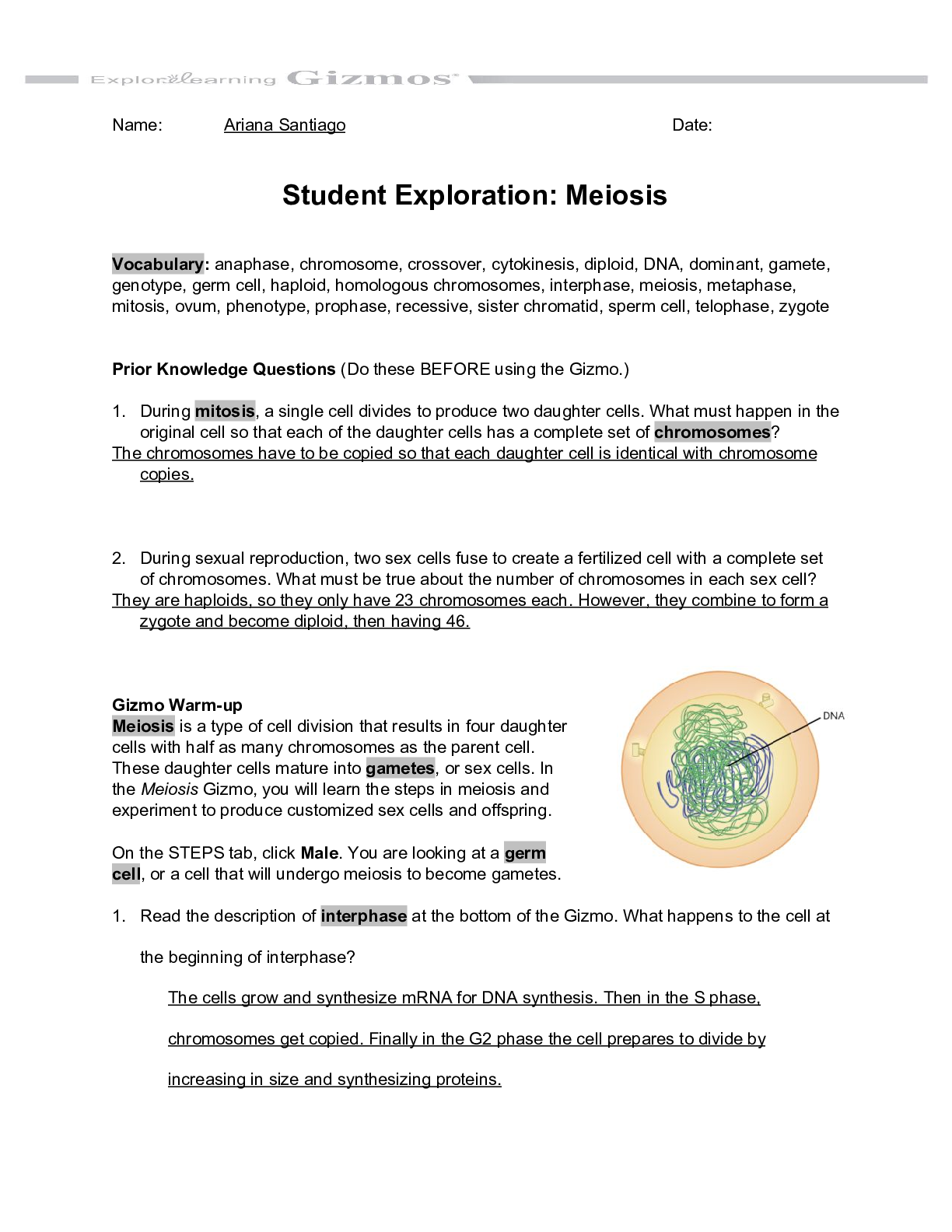

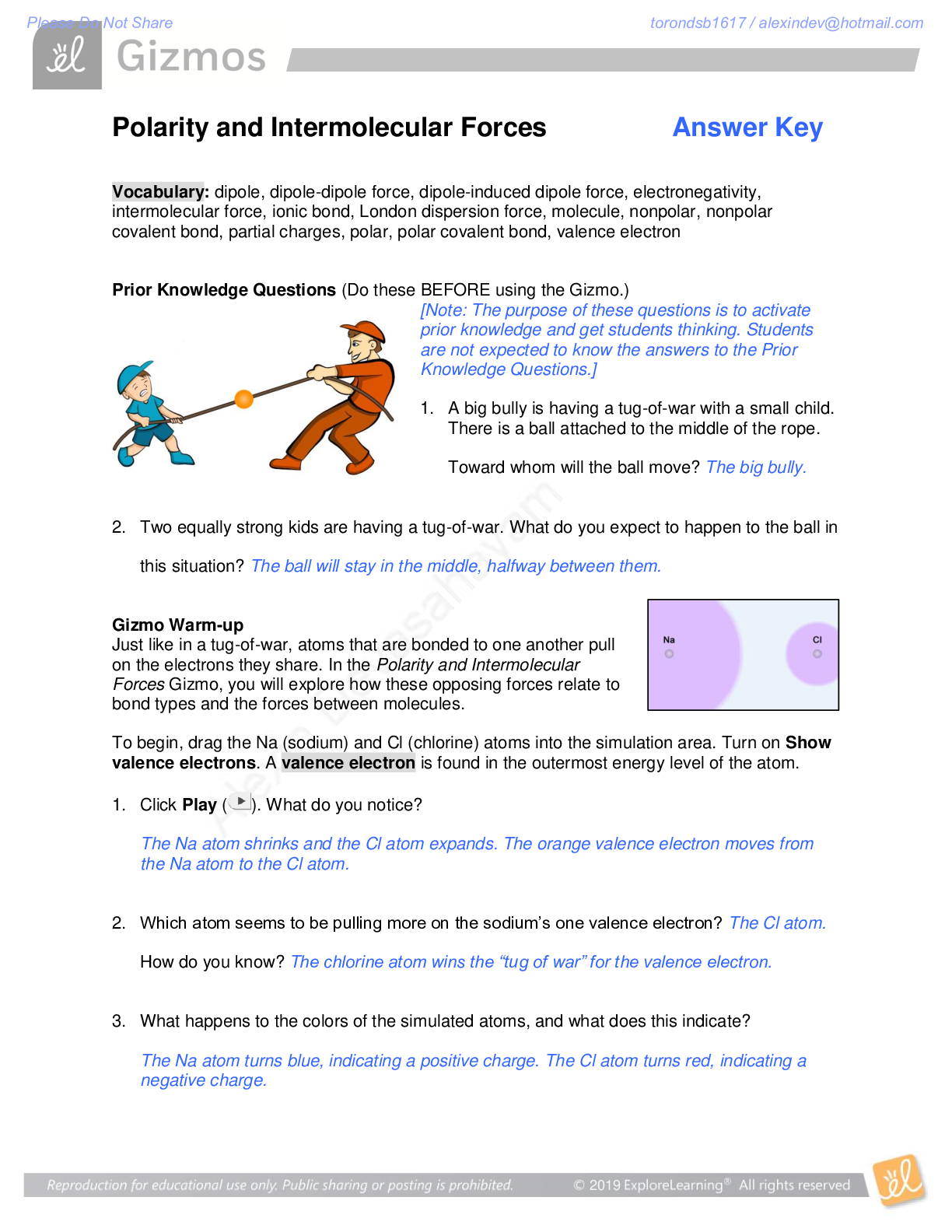
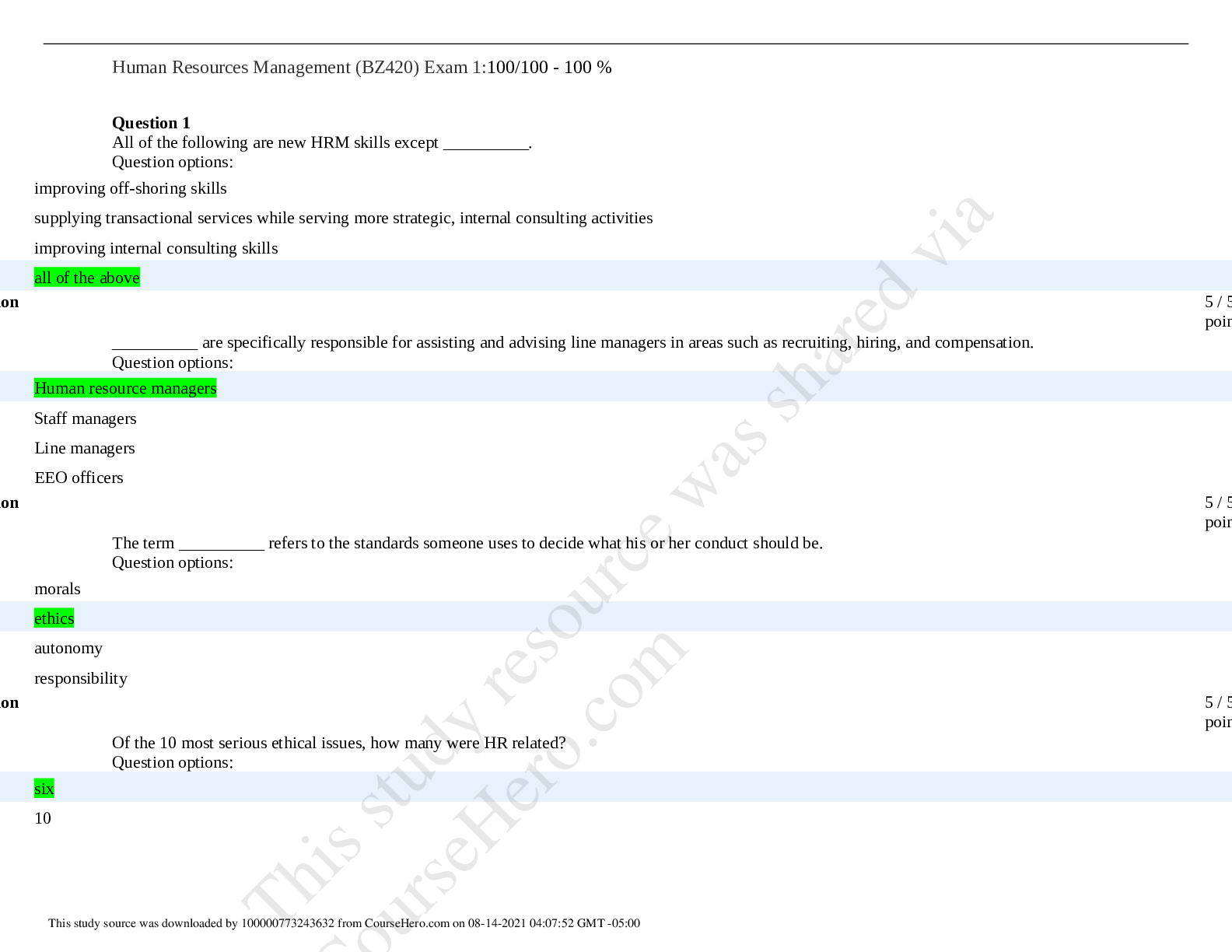
.png)
